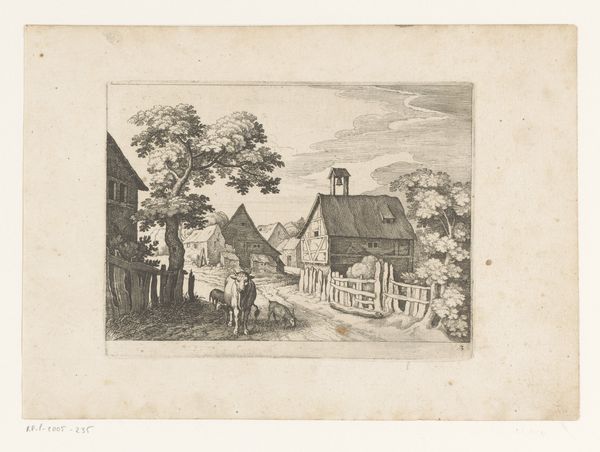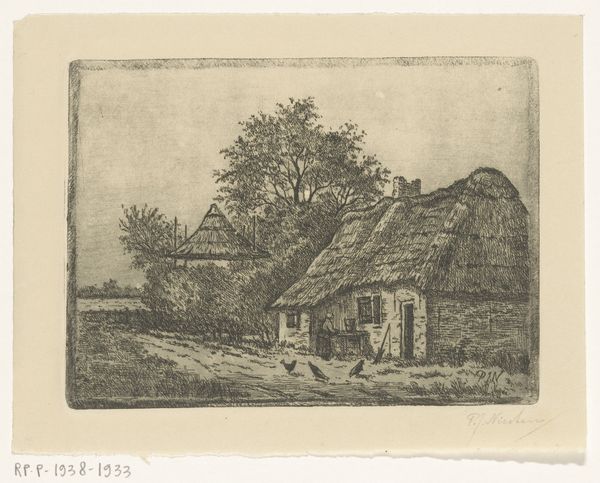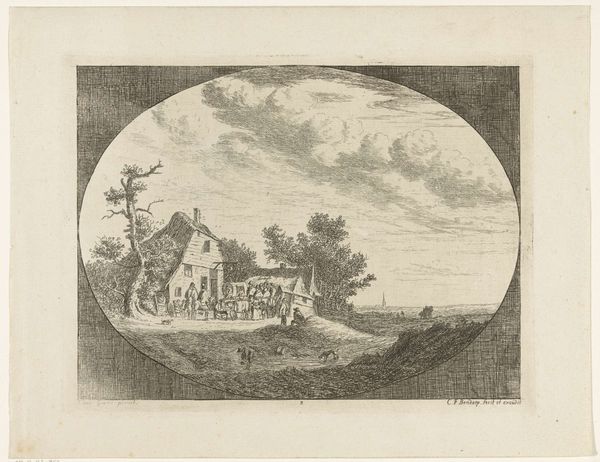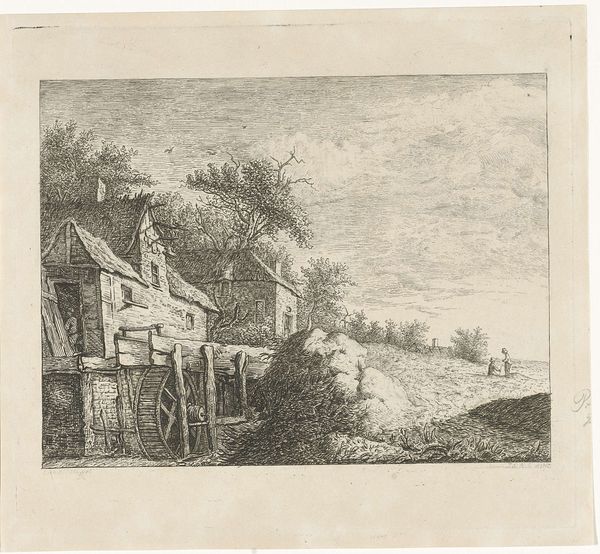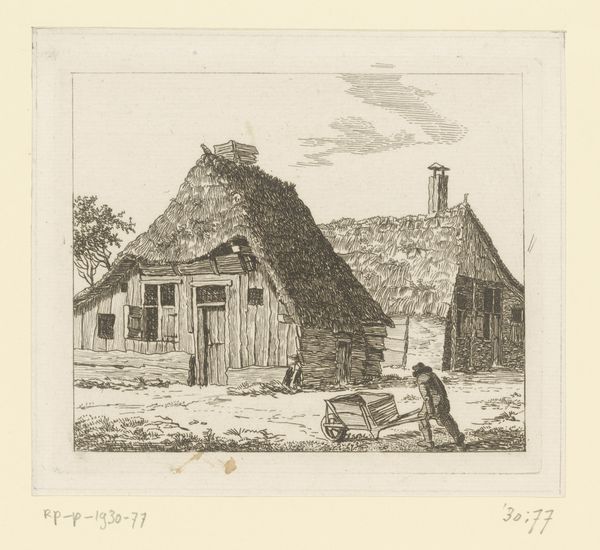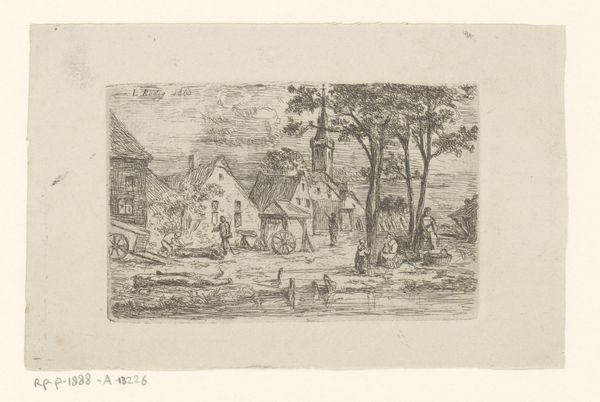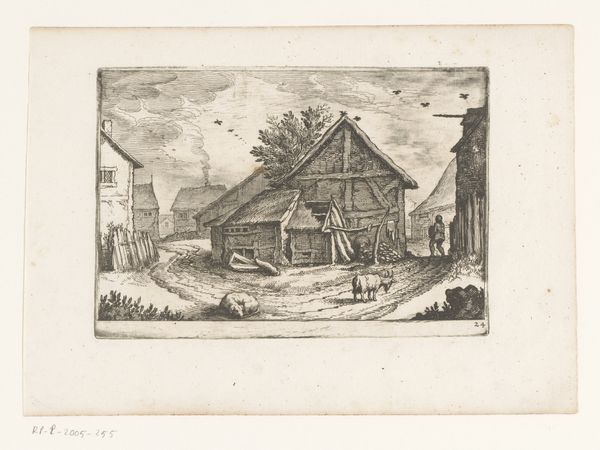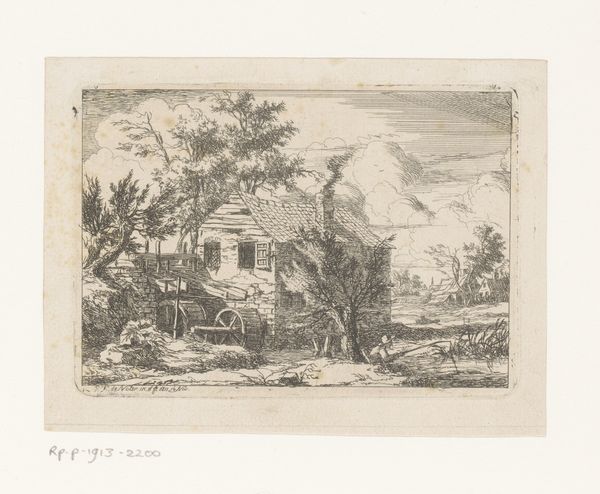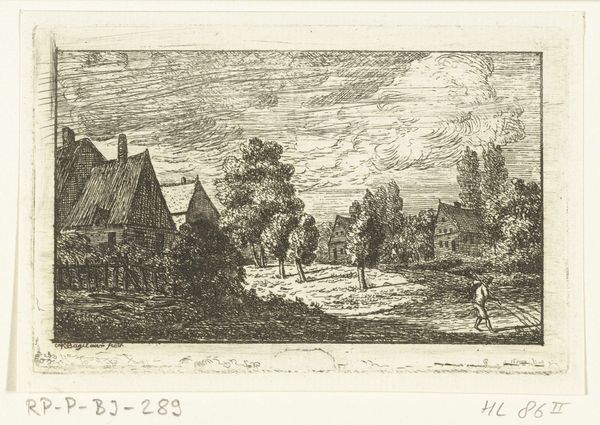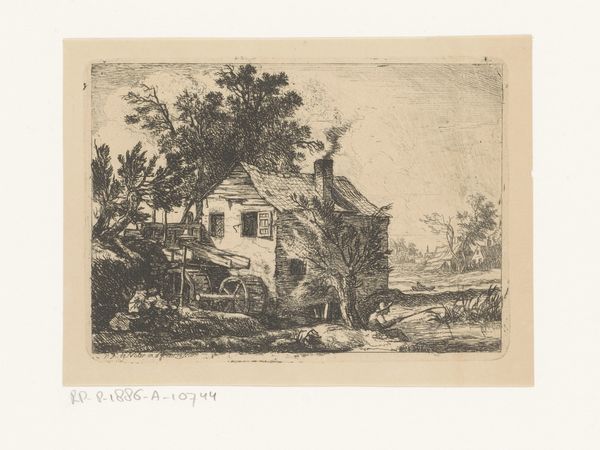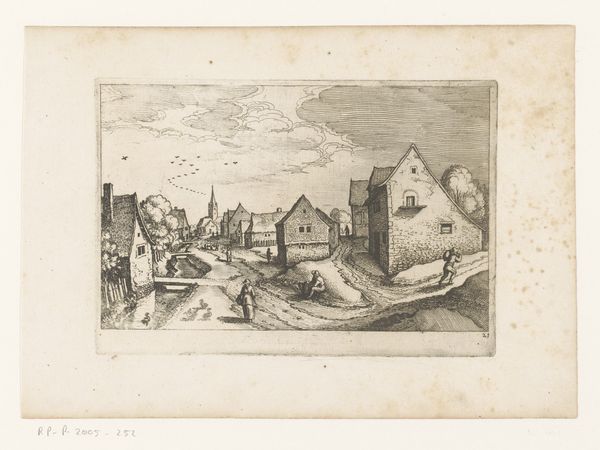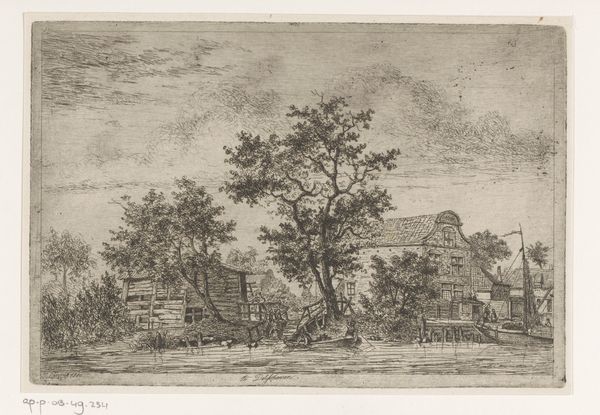
drawing, print, etching, paper, engraving
#
drawing
# print
#
etching
#
landscape
#
paper
#
line
#
genre-painting
#
engraving
#
realism
Dimensions: height 67 mm, width 82 mm
Copyright: Rijks Museum: Open Domain
Curator: Welcome. Today, we’ll examine "Dorpsstraat," or Village Street, an etching by Jan van Noort, dating to the late 18th or early 19th century. Editor: It's so tiny! A perfect little world caught in sepia tones, like a memory. There's such a quiet intimacy despite all the bustling figures. What’s everyone doing? Curator: The composition uses line predominantly to establish form and depth. We see an intricate layering of textures—the thatched roof against the cloudy sky, the varied stances and relationships of people. It’s essentially a genre painting reduced to its structural skeleton. Editor: Structure…hmm. To me, it feels like a stage. The house, that skewed perspective, with a ladder leading up to what I presume is a bedroom window, is all so theatrical. And look at those characters! A cluster of figures in front, another little drama on horseback playing out in the distance. Is it pure documentation, or is Noort injecting his own narrative? Curator: I find your term ‘stage’ intriguing. Semiotically, we could view the receding street as a kind of signifier pointing to the vanishing point and the limited possibilities in human action – an idea emphasized by the graphic austerity of the piece. Editor: That sounds rather bleak! For me, that house…the light falling just so on the timber, and that lone figure in the window - offers a contrasting kind of warmth, an echo of domesticity. What did it mean to belong to a place, to exist in its small narratives back then? Curator: Ultimately, Noort’s masterful use of line invites interpretation, encouraging us to investigate beyond the mere recording of village life into ideas of being and seeing in the 18th century. Editor: Precisely! Little details, small stories… I'll be pondering that miniature drama on my way home. It certainly encapsulates so much of life, even in its seemingly simple frame.
Comments
No comments
Be the first to comment and join the conversation on the ultimate creative platform.
